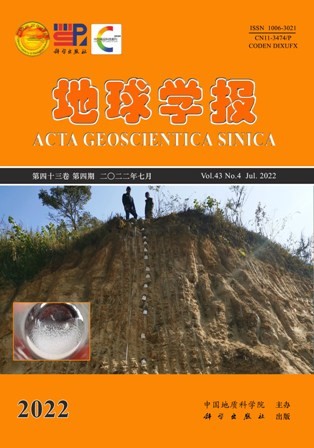
|
封面故事:云南红河州离子吸附型稀土矿剖面及化学浸取雪花状离子吸附稀土。通过实施“化学地球”大科学计划和1:25万、1:5万地球化学调查, 圈定稀土异常超常富集区9处。其中在松潘—甘孜造山带、扬子克拉通与华南造山带的交汇处, 发现形成于印支期和燕山期花岗岩以及元古界花岗质片麻岩和变粒岩上方的风化壳矿体。经剖面测量和29个钻孔验证, 现已查明该风化壳矿体平均厚度6~13 m, 平均品位0.14%。估算稀土氧化物资源量约100万吨。是首次在滇南发现的潜在超大型富含重稀土离子吸附型稀土矿。这项由中国地质科学院地球物理地球化学勘查研究所王学求研究团队取得的研究成果, 详见本期509-519页。(图片提供:王学求)
Cover Story:REE ion-adsorption profile from a site in Honghe, South Yunnan and snowflake-like ion-adsorbed REEs determined using field chemical analyses. A total of 9 REE-enriched geochemical provinces were delineated throughout China by the Mapping Chemical Earth Program–China Geochemical Baselines project and geochemical surveys at scales of 1:250 000 and 1:50 000. An HREE- enriched ore body hosted in regolith developed from Indosinian and Yanshanian granites and Proterozoic gneiss and leptynite protoliths has been discovered at the boundary region of the Song-pan–Ganzi orogenic belt, Yangtze Craton and Southern China orogenic belt in Honghe. The average thickness of the ore body is 6–13 m through section measurements with a TRE2O3 reserve of approxi-mately 1.0 million tons at an average grade of 0.14% as determined by 29 borehole verifications. This is the first discovery of a giant ion-adsorption REE deposit in South Yunnan, China. The research achievement was led by Professor WANG Xue-qiu, Institute of Geophysical and Geochemical Exploration, CAGS. For details, see pp. 509-519 of this issue. (Photo by WANG Xue-qiu)
|

